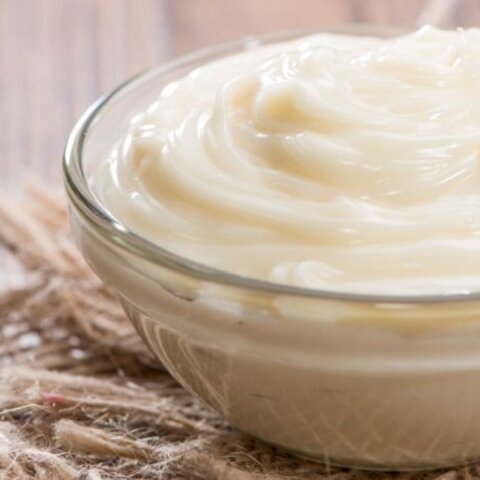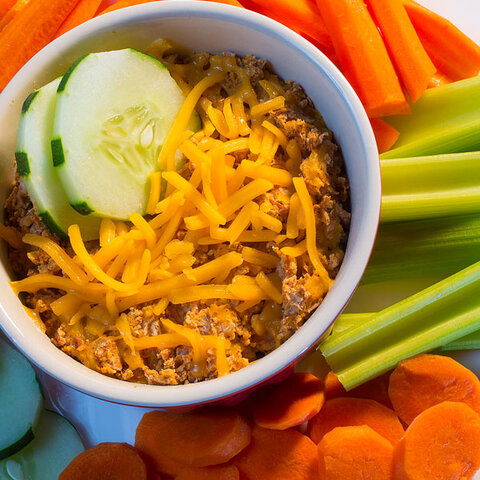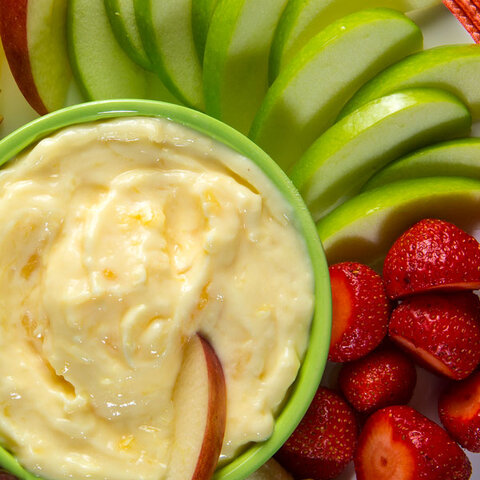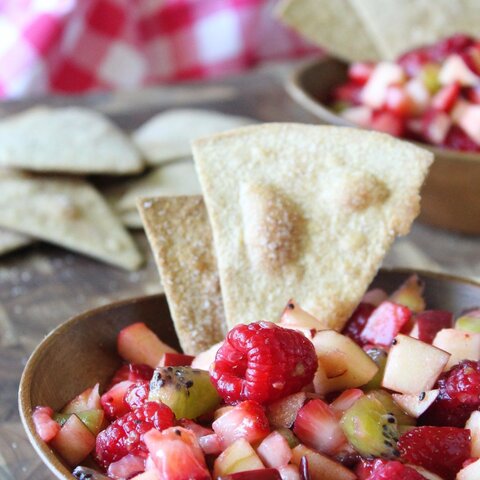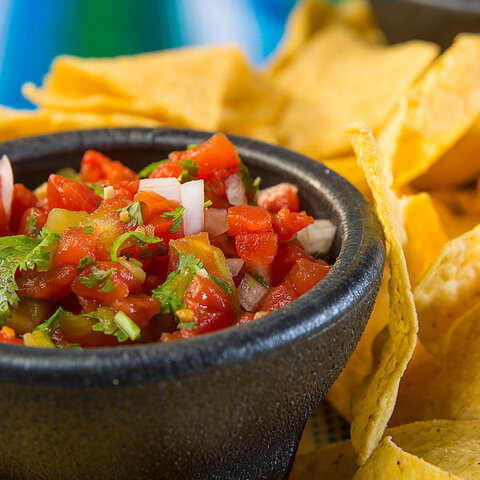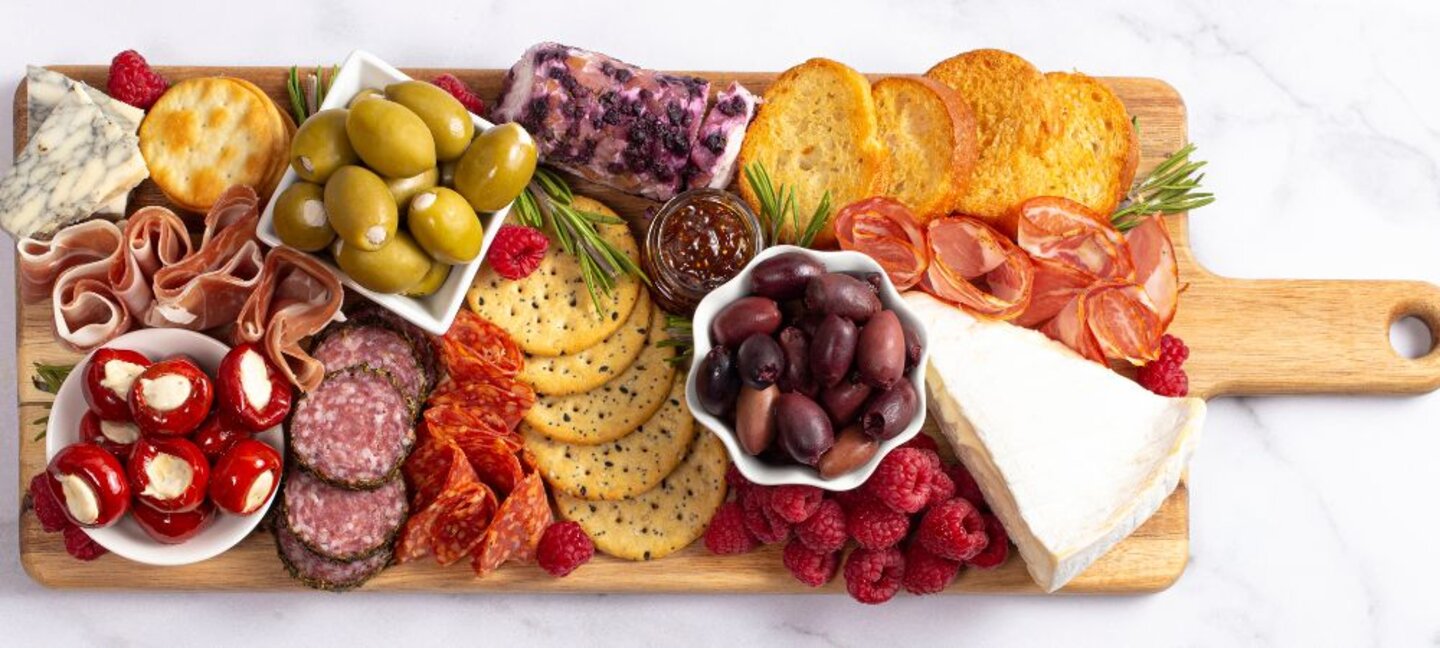
Charcuterie boards are extremely popular right now. A charcuterie board is an assortment of meats, cheeses, nuts, breads, olives, fruits, dips, and spreads - arranged on a cutting board or tray. It is important to make sure that you are following good food safety practices when preparing and serving charcuterie boards and other party trays such as butter, cream cheese, and dessert boards. Here are tips:
Charcuterie Boards
- Start with clean hands, surfaces, and boards/platters/trays. Consider wearing gloves when preparing the board.
- Wash produce and fresh herbs before using.
- Cut produce and cheeses need to be refrigerated until served and should not be kept at room temperature for more than 2 hours total (one hour if the temperature is above 90 °F).
- Use clean serving utensils, spoons for dips, tongs, or toothpicks to keep guests from contaminating the entire board. Each serving dish needs a separate utensil.
- If you want individual portions, try a charcuterie board in a jelly jar or other small container.
- Keep dips and items with liquids in small containers so they don't leak all over your board.
- Replace dips and condiments at least every two hours. Wash the containers out in between use.
- Consider keeping a small selection of "refill" items, like sliced meats and cheeses in the refrigerator ready to go when the board needs restocking.
- Charcuterie meats and cheeses have the most flavor when served at room temperature. Remember these should not be left out at room temperature for more than two hours total.
- Consider using a designated cutting board for charcuterie use, and not one you use to cut up raw protein foods. All plastic and wooden cutting boards wear out over time. Once cutting boards become excessively worn or develop hard-to-clean grooves, they should be discarded.
Butter Boards or Cream Cheese Boards:
- It is recommended that a plastic cutting board is used instead of a wooden one as they are easier to clean and sanitize. Ceramic plates and decorative containers work well also.
- A wooden cutting board can be used if the butter or cream cheese are in containers.
- If you need to use a wooden cutting board, place a sheet of parchment paper on the board before spreading the butter.
- Making individual plates or dipping bowls with butter or cream cheese in them discourages double dipping in someone else's food.
- It is a best practice to use a small cutting board and replenish when needed or swap out for another board. Refrigerated foods should not be left out for more than two hours.
- These boards are not recommended for those susceptible to food borne illness, including the elderly, the very young, pregnant, or immunocompromised.
- Once the board has set out and been used, leftovers need to be refrigerated or thrown away.
Dessert Boards:
- When using items like pie, dips, cheesecakes, and other potentially hazardous items that require refrigeration, keep them cold until used, then put out in small amounts so the items do not sit out for more than two hours.
- Cut fruits and vegetables need to be kept cold until used and replaced every two hours.
Cleaning Cutting Boards
To keep all cutting boards clean, the USDA recommends washing them with hot, soapy water after each use; then rinse with clear water and air dry or pat dry with clean paper towels. Nonporous acrylic, plastic, or glass boards and solid wood boards can be washed in a dishwasher (laminated boards may crack and split).
- Both wooden and plastic cutting boards can be sanitized with a solution of 1 tablespoon of unscented, liquid chlorine bleach per gallon of water. Flood the surface with the bleach solution and allow it to stand for several minutes. Rinse with clear water and air dry or pat dry with clean paper towels.
- Bamboo cutting boards are harder and less porous than hardwoods. Bamboo absorbs very little moisture and resists scarring from knives, so they are more resistant to bacteria than other woods. Clean bamboo cutting boards with hot soapy water; sanitize if desired. Rub with food grade mineral oil (liquid paraffin) to help retain moisture.
Sources:
Charcuterie Boards and Snacking, Konnecting with Kris, University of Arkansas
Cutting Boards, United States Department of Agriculture (USDA)
The science behind charcuterie, Kansas State Extension
This article was written by Cindy Brison. It was peer-reviewed in 2022.
Tags:

